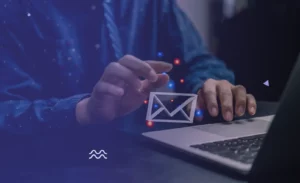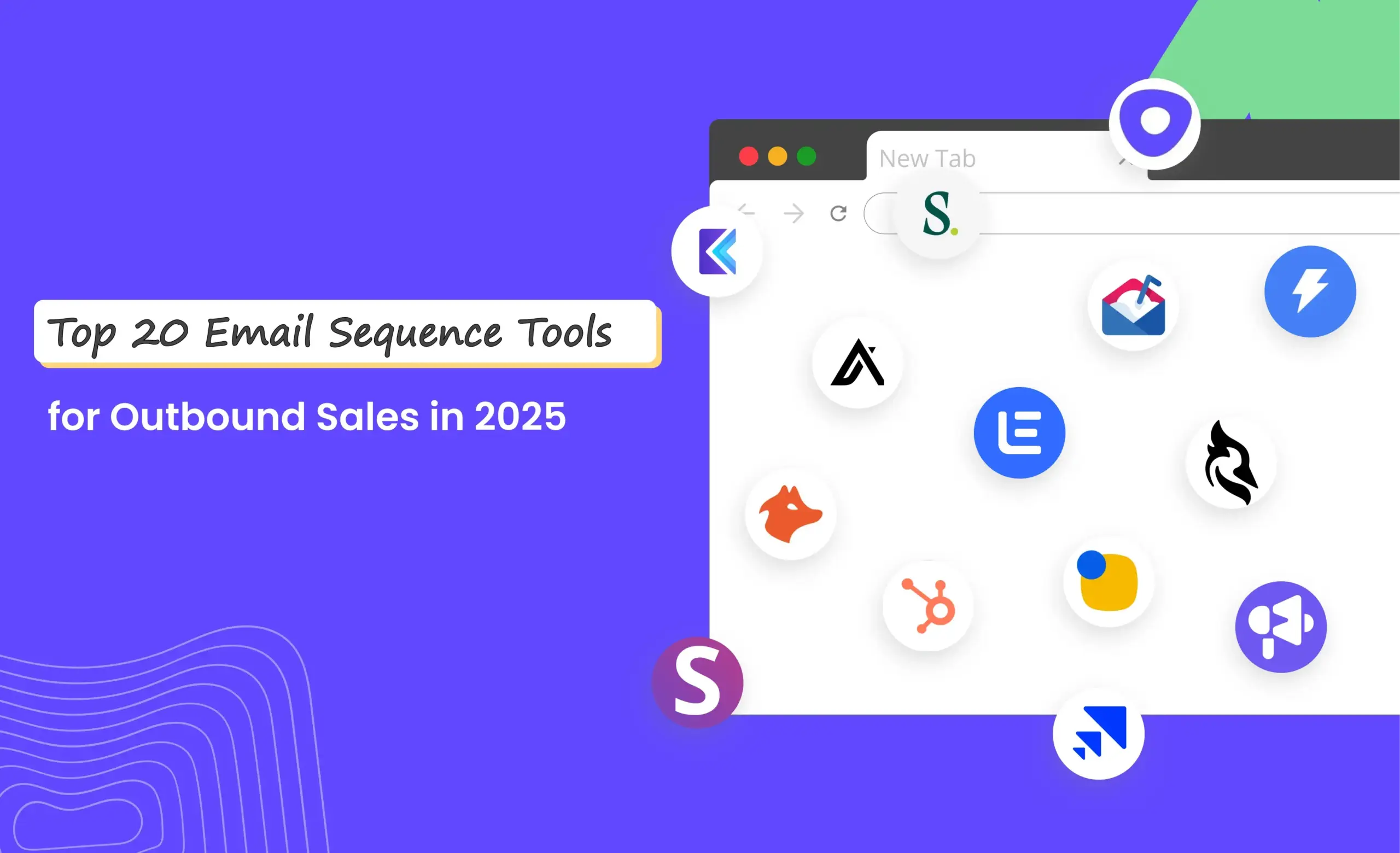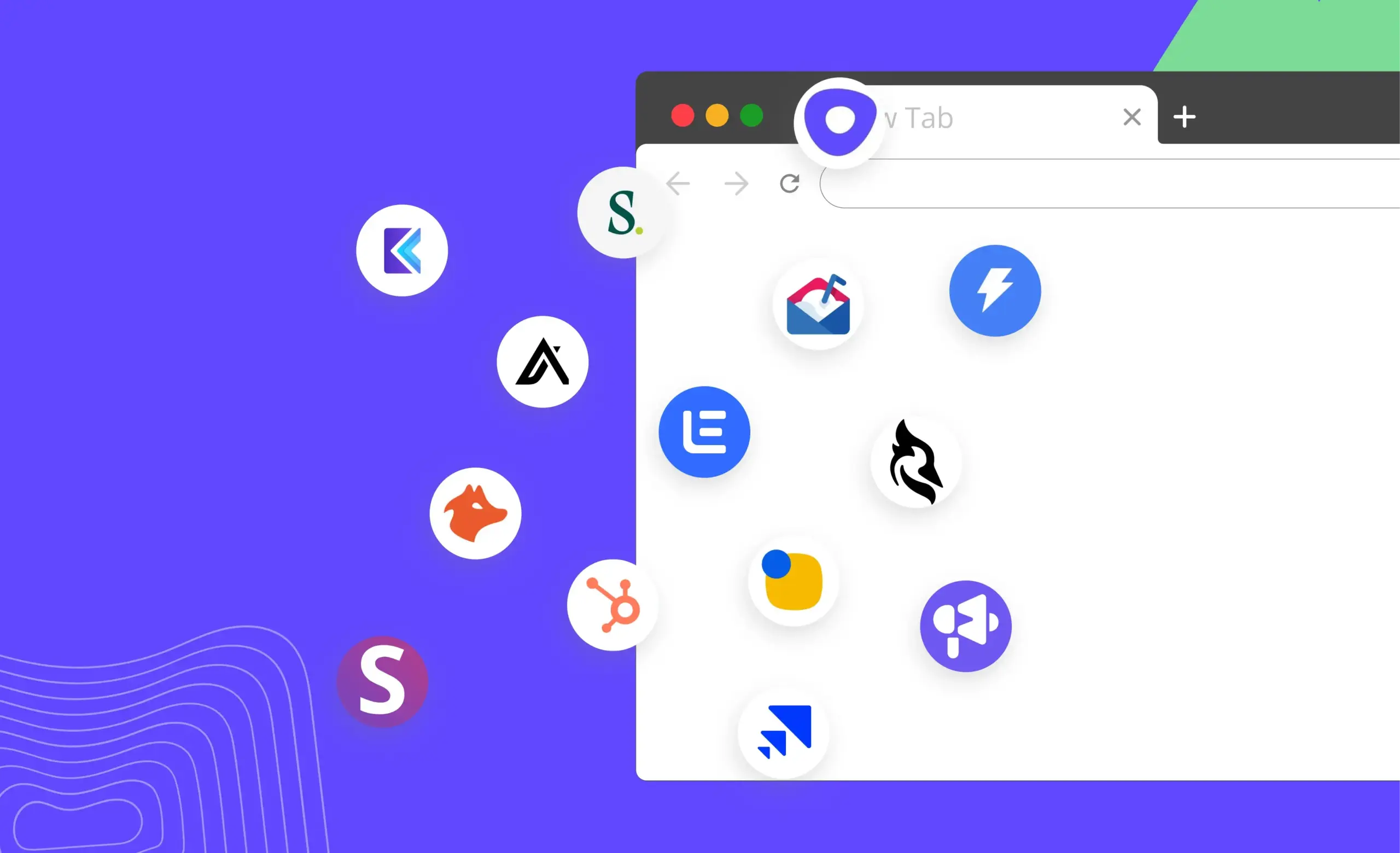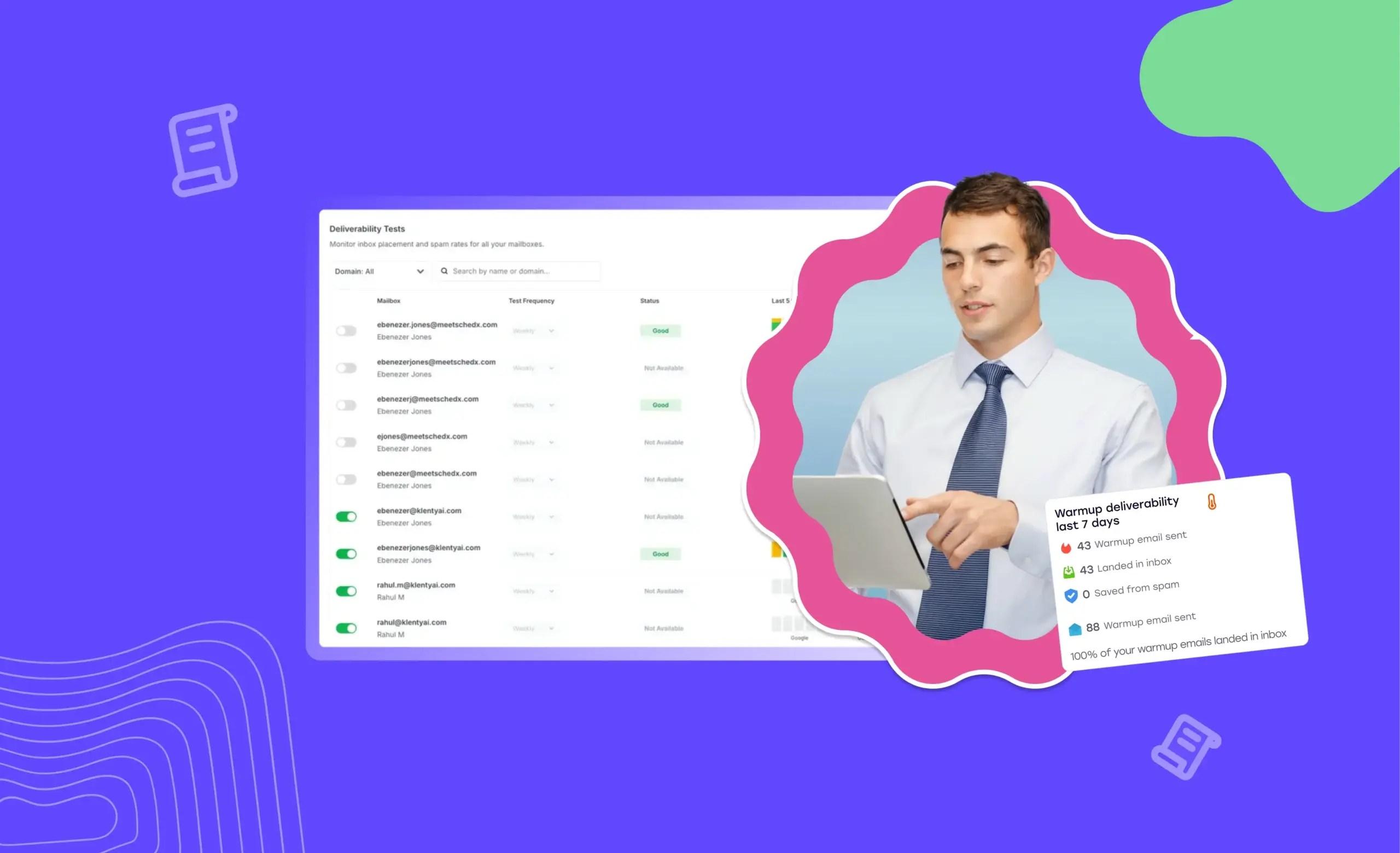How are you doing?
Hope you are well.
Following up on my last message…
Wait! Before you ditch this blog post, let us be straight with you.
We hate these opening lines, too.
If your prospect sees a LinkedIn message that opens with a boring-to-bone line like the ones above, they’d log out, shut the computer, change their address, and move to a different city.
Maybe not quite so dramatic, but you get it.
Look, we’re not asking you not to cold contact your prospects on LinkedIn. In fact, there are 3 good ways to do so without coming across as a spammer. We’ll break down that and give you a framework to follow every time you have to cold email someone on LinkedIn.
How to Cold Message Someone on LinkedIn?
You can cold message your prospects on LinkedIn in 3 ways: a connection request, a cold DM, or through InMail.
- Add a Note With a Connection Request
When you send a connection request to your prospect, LinkedIn asks whether you want to add a note. This note allows you to introduce yourself and give context as to why you want to connect with them.
So, don't make it appear boring with messages like: “Hi Jane, I’d like to add you to my professional network on LinkedIn.” We'll see in the next section why this is a bad idea.
Character Limit: 300 (Characters include letters, numbers, symbols, and spaces)
- Cold DM
By default, you can send a direct message on LinkedIn to all your direct connections (aka 1st-degree connections), to fellow group members within group pages, and to those of your prospects that allow you to message them.
What’s more, LinkedIn has no sending limits for DMing users. But don’t go ballistic sending those sales messages. You don’t want to seem like a spammer and have them un-connect with you.
Character Limit: Nil
- InMail
To send a direct InMail message to someone not in your connection, you need to buy InMail credits. And for that, you need LinkedIn’s Premium membership or a LinkedIn Sales Navigator subscription. Note both plans give different limits on InMail credits. You can start with as low as 5 InMail credits with a Premium Career Subscription and go up to 120 InMail Credits with a Recruiter Lite subscription.
If you’re considering prospecting on LinkedIn, we suggest opting for a subscription that allows for higher sending limits. That’s because InMail has open rates above 85% and clickthrough rates over 5%, which means it’s more likely to convert than a regular cold email.
Character Limit: 1900 (body text), 200 (subject line)
How to Craft the Perfect Message for Each of These LinkedIn Outreach Methods
1. The Subtle Art of Writing the 'Add a Note' Message
For every connection request you send on LinkedIn, you can 'Add a note.'
This note lets you personalize your invitation and show interest in the prospect. But when you have a mere 300 characters to wow them (even less because they’ll have to click on see more to view the whole message), long messages are out the window. So, are done-to-death messages like, ‘Hi Melonie. I’d like to add you to my professional network on LinkedIn.’
“’ Please add me...’ is a command, and I don't know you, and I get WAYY too many of that. Better to just request to connect with no note instead of that or make a thoughtful note,” tweeted Mor Assouline, Founder of From Demo To Close and sales coach. So how do you make a thoughtful note? Well, you can do it in 2 ways.
- Personalize your message
Keep your notes crisp and personalized. Start your note with a polite hello and mention how you found your prospect. Did you find them through a LinkedIn post? (While you’re here, throw in a compliment). Maybe you went to the same school.
Connect on common ground. This will help your prospect develop a familiarity with you. That means greater chances of accepting your connection request and engaging with you.
Here’s what that can look like:
Hi, (Name). I read your post on (pain point) that you had put up. Loved how you brought it all together to highlight (a specific aspect of the pain point). I cannot agree more with what you’ve mentioned. Would love to keep in touch. - Add value
Resist the urge to include a sales pitch. Your prospects are not on LinkedIn to solicit a sale. They’re on the platform to make business connections. So, share value and get straight to the point.
How to do it:
Step 1: Put up a social post regarding a resource that solves a prospect's pain point on LinkedIn. Then add a call to action asking prospects to comment if they need the resource.
Step 2: Send the prospects the resource via email or LinkedIn and 1-2 follow-up messages via LinkedIn. You’d first want to send them the resource, and then in the follow-ups, you can qualify these prospects.
If you’re doing this on LinkedIn, you’re message can look like this:
Hi {name},
Like we noted in the {resource}, {write a key takeaway you gave out in the resource}. If you’d like some help solving {problem}, I’d be more than happy to help.
Cheers.Pro Tip: Before sending the connection request, visit your prospect’s LinkedIn profile. Check what type of content they have engaged with, which recent events they visited, and what milestones they have conquered. Doing this will help you craft a timely yet relevant personalized note for your connection request.
2. Always Keep Cold LinkedIn DMs and InMails Short
Whether you’re sending a DM or an InMail, your message is bound to land in your prospect’s LinkedIn inbox. If they decide to open it, the message will show in a small pop-up box displaying only the last couple of dozen of characters. That means despite the higher character limits, you ought to keep your messages short. (Preferably 400 characters or less.)
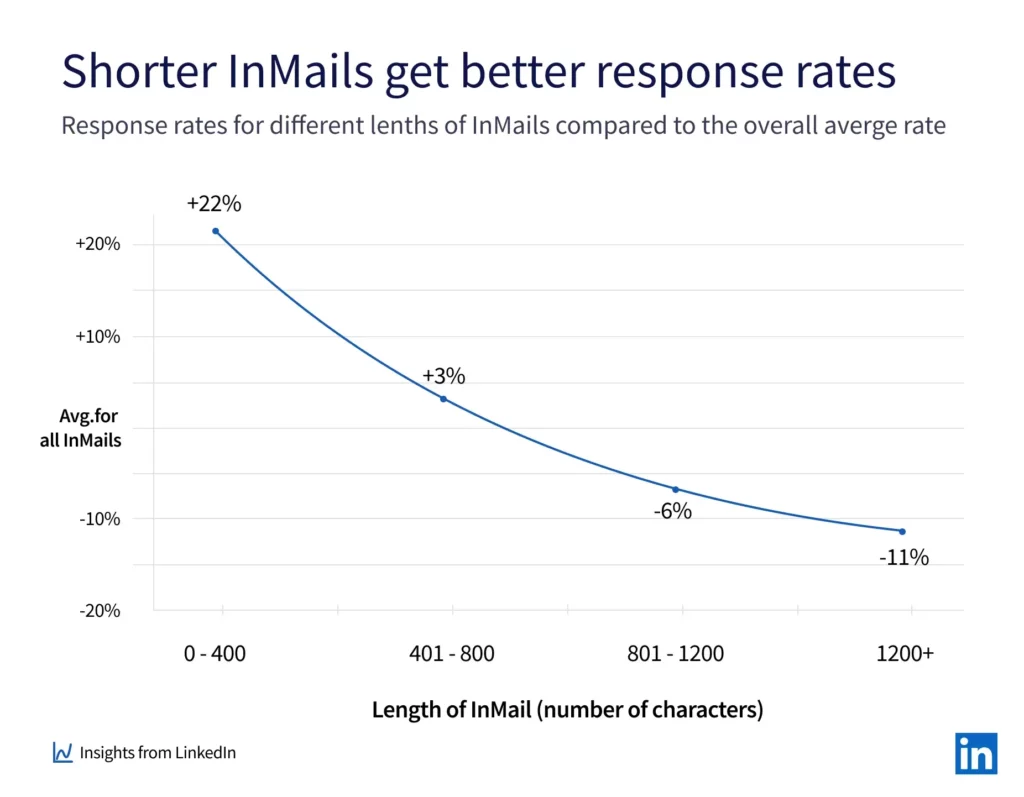
Send a longer message than that, and you’re asking your prospect to work for you by making them scroll up/down. Not to mention, you’re probably loading them with unnecessary information. The obvious question, then, is:
What is necessary information, and how to add it?
According to LinkedIn’s own Best Practices cheatsheet, it boils down to this - make it about their needs, actions, and goals, and not just your product/service.
Sales leaders like Morgan Ingram suggest treating InMails like cold emails. So, that means following the same processes whether you’re writing a DM or an InMail.
- Adding a short, relevant, and intriguing subject line (applicable only for InMails).
- Researching your prospects thoroughly (checking their company information, social media posts, website, and more to understand their interests and motivations. This will help you create a personalized message that appeals to them).
- Not pitching anything—no sales or meetings.
- Adding a low-friction CTA by asking for their interest. Asking for advice or opinions in your CTAs fall under this category. (More on this later).
- Adopting a conversational tone of voice (Write like how you speak here, keyword: sound natural).
Our recommendation: What’s The Best Approach to Writing Cold Messages on LinkedIn?
Asking for advice or opinions. For one, it performs well. Gong’s study suggests CTAs asking for the prospect’s interest works better than Specific CTAs and open-ended CTAs.
More specifically because it adopts the principle of selling the conversation, not the meeting.
Your prospects value their time and won’t spend their time devouring your resources (much less hop on a meeting) with a complete stranger. By asking them if they’re interested in your ask, whether that’s sending additional resources, hopping on a meeting, or considering your solution, you’re giving them the opportunity to back out. Plus, you’re leaving it up to them to consume the content you shared in their own time.
Here’s what that could look like: ‘I’d love to hear your perspective on [topic].’
But with all that said, what does a good cold LinkedIn message look like?
5 Examples of Great Cold LinkedIn Messages
1. Value-Driven Message
This message adheres to the law of reciprocity. Offering something to your prospect increases your chances of getting something in return. Here’s an example:
Noticed your team onboarded a bunch of new reps this week, Martin! How's the onboarding coming along?
P.S. You can use the attached free productivity tracker if you face any challenges. It’s easy to use and effective.2. Personalized Message
76% of respondents in a study by McKinsey & Company say they get frustrated when they receive non-personalized messages. So, walk the extra mile to craft one. Here’s one way to do it.
In this message example, the prospect is an event manager, and this message focuses on her recent experience:
Hi Kayla, It was nice meeting you at FEDEXPO in Kansas. Our conversation about event management really got me thinking about how our company can manage our in-office events better.
I’d like to keep in touch and stay in the loop about what you’re up to. Let’s connect!3. Name-Drop Message
When you tell prospects about Beyoncé using your product, you’ll definitely have some curious ears. This bandwagon effect can make them believe you and take your words seriously. Here’s an example.
Hey John, I saw you know Sarah? I think you two would have a lot to talk about.
Sarah is currently using our sales automation tool, and I know she’s very happy about it. I was wondering if you were looking for a new software application at BoomAI?4. Ego-massage Message
If your prospects are active on LinkedIn and posting their insights, chances are they’re looking to develop a following on the platform. One way to connect with these prospects is to massage their ego gently. You want to seem like an honest admirer, so referencing their recent achievements (preferably something they’ve posted about) helps. Here’s an example:
Hey John, I noticed your profile was at the top of search results for our industry. I would love to talk more with an expert in the field and get some solid advice.Note: Don’t follow up with a pitch soon after you send this message. Ask thorough follow-up questions and show genuine interest. Then once you build trust, pitch your product.
5. Re-engagement Message for Connections
If your LinkedIn cold outreach efforts froze with your prospect accepting your connection request, warm your prospects up with a simple re-engagement message. This can help you connect with your prospect once again and sometimes further a conversation too. Here’s one way to do it.
Hey Bob,
We’ve connected here on LinkedIn for a while but don’t really know each other. As much as I love all this social media stuff, I actually like to get to know my connections.
Would you be open to a call or maybe grabbing a coffee sometime soon? Just to get to know about each other’s businesses and see how we might be able to help each other.Expert Tips From Industry Leaders For LinkedIn Messaging
1. Convert Your LinkedIn Profile to an Online Portfolio
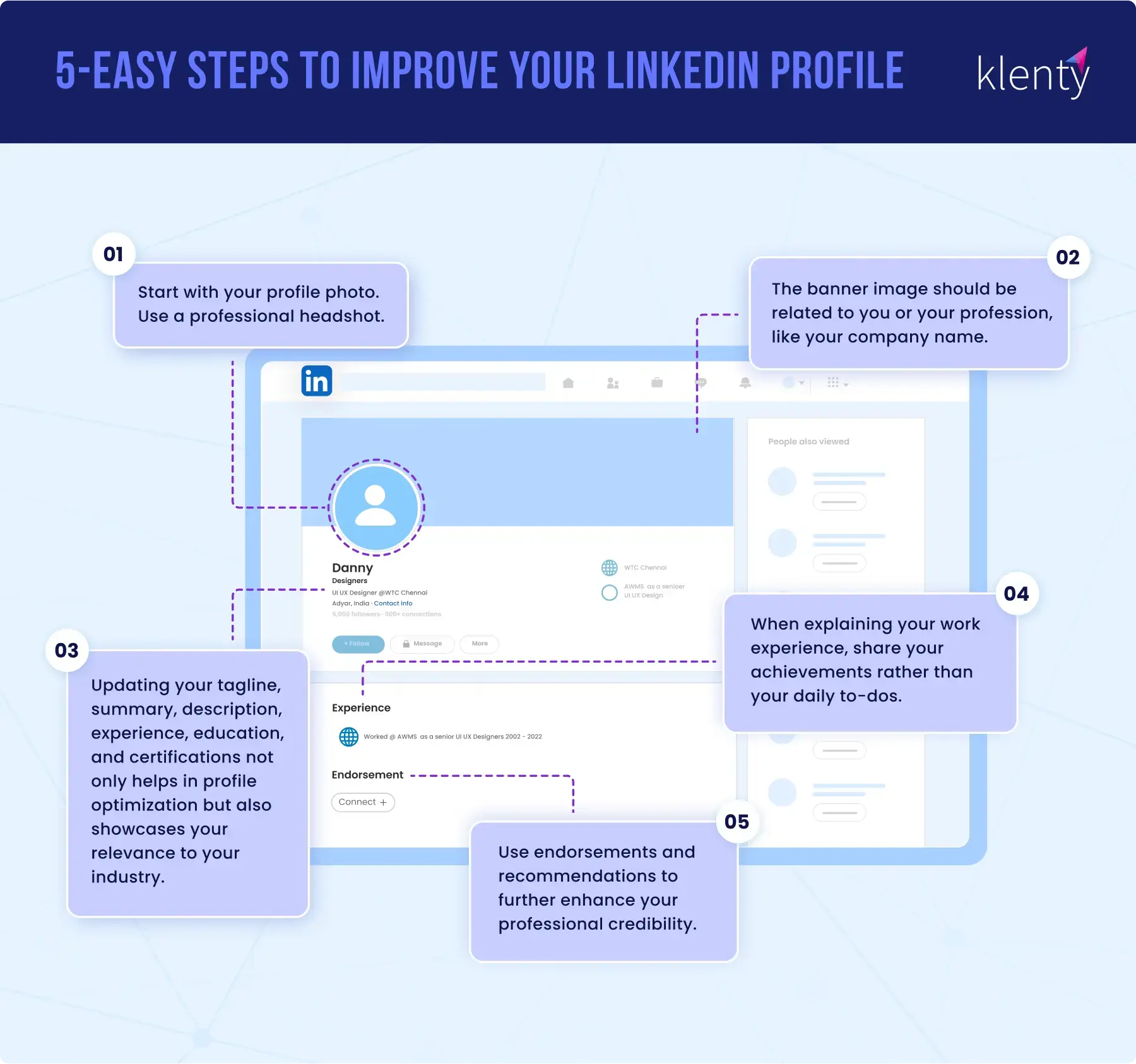
50% of buyers won’t engage with you if you have an incomplete profile. A well-crafted profile highlighting your expertise and unique value proposition increases your credibility. On why it’s important, LinkedIn says, “It’s not just your brand that your audience is interacting with. People do business with other people, so profiles matter.”
You must aim for close to 100% profile completion and regularly update it with new achievements and skills. But as the platform points out, authenticity is supreme. Here’s how you can improve your LinkedIn profile in 5 easy steps:
- Start with your profile photo. Use a professional headshot.
- The banner image should be related to you or your profession, like your company name.
- Updating your tagline, summary, description, experience, education, and certifications not only helps in profile optimization but also showcases your relevance to your industry.
- When explaining your work experience, share your achievements rather than your daily to-dos.
- Use endorsements and recommendations to further enhance your professional credibility.
2. Have Fun with Your Writing
Adding a dash of humor to your sales outreach strategy can serve as a pattern interrupt, yanking your potential customers out of a sea of sore formal messages asking for a meeting.
Vervotech’s Aamir Sohail says he uses GIFs while reaching out to prospects on LinkedIn as his audience is more receptive to them. You can even infuse your messages with humor, wit, or clever wordplay and see your reply rate shoot up.
Note: Humor is subjective and differs depending on your prospect’s age and culture. So, exercise caution before sending a funny GIF to just any prospect. Do your research, check their social media activity, and use your intuition to figure out if your prospect will be receptive to it.
Tip: Use AI tools like ChatGPT to add some humor to your messages. With the right prompts these tools can help you come up with jokes, adopt a suitable tone of voice and even whip up fun analogies.
3. Send Voice Notes
Adding humor to your DMs can be a hit or a miss, but sending over a voice message will definitely grab your prospect’s attention. Sales experts we interviewed have tried it and found this outreach method quite successful.
Wondering what you should be saying in your voice message?
Morgan Ingram suggests coming up with an insight or a trigger within the first 10 seconds of the voice message–anything to grab their attention. So, take a look at your prospect’s recent activity on LinkedIn or on other social platforms like Twitter or YouTube, or even their website.
For the next 30 seconds, he suggests adding your value proposition or elevator pitch (anything you’d otherwise say on a cold call if you ask us). Finally, he suggests adding a CTA depending on what action you’d like for the prospect to take next.
Note: You can send LinkedIn voice notes only to a 1st-degree connection. Plus, you can do it only on mobile (iOS or Android).
4. Stay active on LinkedIn if Your Prospects are on the Platform
Knowing how to cold email someone on LinkedIn is essential, but it doesn’t necessarily make you relevant. Engaging with your network does. Share valuable content or insights regularly to showcase your expertise and connect with your target audience on a deeper level.
Nanditha Menon, BDR at G2, actively posts on LinkedIn and leverages it to maximize her chances of booking meetings.
She posts content relevant to her organization at least once a week to stay at the top of her prospects' LinkedIn feeds. This also helps remind them to reply to her emails or LinkedIn messages. "I had a prospect who saw a LinkedIn post of mine, emailed me, and then we got a meeting," she recalls.
Elevate Your LinkedIn Messaging Game
From sending short messages to Inmail, these tips will help you master the art of cold outreach on LinkedIn and boost lead generation. Couple your efforts with powerful LinkedIn automation tools, and you have the best recipe for successful LinkedIn outreach. Remember the three secret weapons to expand your reach–engage with prospects meaningfully by personalizing your messages to their pain points, offering genuine compliments, and communicating clearly.
